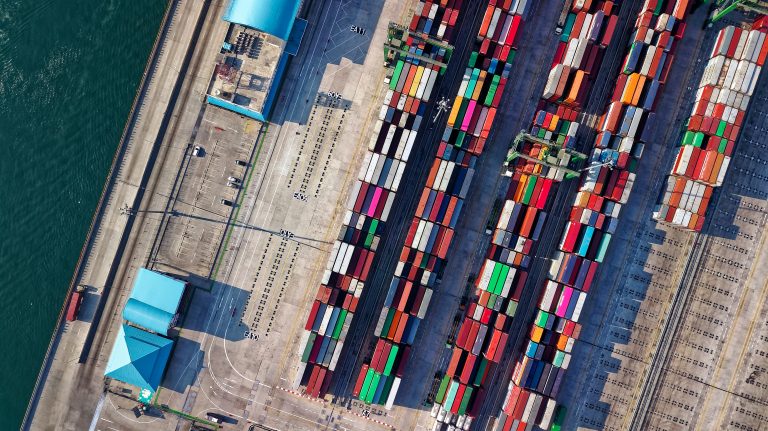Precision Pathways: Harnessing In-Depth GPS Fleet Tracking Data for Finely-Tuned Fleet Excellence Across Industries
In today’s interconnected world, fleet management isn’t just about ensuring vehicles get from Point A to Point B. With the advent of advanced GPS fleet tracking systems, managers can now harness a wealth of data from their vehicles. This data, when analyzed meticulously, can yield insights that can transform fleet operations, enhancing efficiency, safety, and profitability.
However, the application and implications of this data vary widely across industries. Let’s embark on a deep dive into how different sectors can utilize and benefit from GPS fleet tracking.
Core Data Metrics: A Quick Refresher
Before we venture into industry-specific insights, it’s vital to understand the primary metrics we’re dealing with:
- Ignition: Represents the active operational hours of a vehicle.
- Idle Time: Duration a vehicle remains stationary with its engine running.
- Speed: Helps monitor if vehicles are adhering to speed limits and driving safely.
- Stops: The frequency of halts made by a vehicle.
- Stop Time: The duration of each halt.
Industry-Specific Insights and Recommendations
1. HVAC Fleet Tracking:
HVAC businesses rely on timely service calls to maintain client satisfaction.
- Idle Time vs. Stop Time: HVAC technicians often use equipment powered by their vehicle’s engine. Comparing idle times with stop times helps discern whether the idling is productive or wasteful.
Action: Implement training sessions to educate technicians about conserving energy and reducing unnecessary idling. - Stops vs. Jobs Completed: By comparing the number of stops with jobs completed, managers can gauge the efficiency of their technicians.
Action: If more stops don’t correlate with more jobs, reassess the route planning or the time spent on each job.
2. Concrete Company Fleet Tracking:
In the concrete business, timing is everything.
- Speed vs. Delivery Time: With the urgency to deliver fresh concrete, delays can tempt drivers to speed. Monitoring this correlation can prevent accidents and ensure the quality of the concrete.
Action: Continuously optimize routes, and liaise with construction sites to ensure smooth offloading upon arrival. - Idle Time vs. Load Time: If a concrete truck is idling for extended periods at the loading station, it can indicate bottlenecks in the supply chain.
Action: Review the loading station’s efficiency and adjust schedules to prevent congestion.
3. Waste Management Fleet Tracking:
Efficiency is paramount in waste management.
- Stops vs. Stop Time: Garbage trucks make frequent stops. Extended stop times can indicate overfilled bins or equipment issues.
Action: Optimize routes based on waste generation patterns and ensure timely maintenance checks. - Speed vs. Route Completion: If trucks are consistently speeding but not completing routes faster, it could point to inefficient route planning.
Action: Reevaluate and reoptimize routes, potentially segmenting areas differently or adjusting pick-up frequencies.
4. Delivery and Logistics Fleet Tracking:
In an age dominated by e-commerce, timely deliveries can make or break a business.
- Stops vs. Parcels Delivered: This comparison gives an insight into a vehicle’s productivity. If a vehicle makes many stops but delivers fewer parcels, it could indicate inefficient loading or route planning.
Action: Reassess loading procedures and use advanced algorithms for route optimization. - Idle Time vs. Delivery Time: Extended idling during delivery times can signal issues like misplaced packages within the vehicle or difficulties in finding the delivery address.
Action: Provide drivers with better package organization tools and ensure they have access to efficient GPS systems that factor in real-time traffic and road conditions.
5. Agricultural Fleet Tracking:
In agriculture, machinery usage is seasonal but crucial.
- Ignition vs. Field Coverage: By monitoring when agricultural machinery is active and comparing it to the area covered, managers can deduce the efficiency of operations.
Action: If machinery is active but covers less ground, consider maintenance checks or operator training sessions. - Idle Time vs. Operational Time: Extended idling of large machinery like tractors can indicate waiting times due to procedural inefficiencies.
Action: Assess workflows to reduce waiting times, such as optimizing irrigation patterns or ensuring timely availability of inputs like seeds and fertilizers.
Harnessing Historical Data
Beyond immediate operational insights, historical data plays a pivotal role. By analyzing trends over months or years, fleet managers can:
- Predict Seasonal Variations: Adjust fleet operations based on historical patterns, like increased deliveries during holiday seasons or heightened agricultural activity during planting seasons.
- Optimize Maintenance Schedules: If breakdowns or decreased efficiency are observed periodically, preemptive maintenance can be scheduled.
Conclusion
With the sophisticated data provided by GPS fleet tracking systems at their fingertips, today’s fleet managers resemble conductors guiding a grand orchestra. Each vehicle, route, and halt is integral, akin to every instrumental note, in harmonizing the entire operation.







